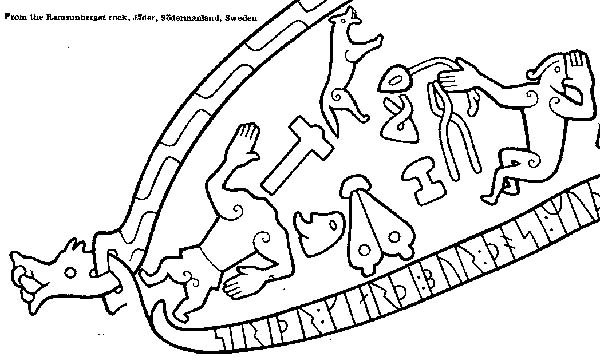A lot has been built on my own problems getting a suitable working bellows system that conforms to the specific historic period of my interest. Thats specifically Northern Europe, and limited to the period between roughly 450 and 1100.
Roman smelters are much larger than those used after the end of direct Roman occupation in the regions after 450. These designs often employ tall enough stacks (over 1.5 metres) that allow for passive air drawn. Even though mostly only the bases remain, use of multiple tuyeres places around the diameters suggests this method.
Drum bellows (or cask bellows) are simple cylinders with a wooden cover holding an intake valve, with a second exhaust valve at the base. Again a good working system, but much earlier than my specific time frame. (At the risk of over simplifying - you can consider these 'Celtic Iron Age')
On the other end of the time chain are those manuscript representations from the Medieval period propper. In illustrations from the 1300 - 1500's you will see both the later 'great bellows' (two stacked chambers) and the earlier 'double bellows' (two separate chambers) types. The double bellows systems are normally shown either as large units attached to water wheels or smaller units operated (not entirely clear in depictions) using some kind of lever system at the blacksmith's forge.
Once again, all the evidence dwindles away at about 1200. All we have for the roughly 600 years before the Crusades are those two Viking Age illustrations of (admittedly and problematicly) blacksmith's bellows.
You can check an earlier posting (October 30, 2007 - Bellows Test ) for a look at the primary reference, that carved on the church at the Hyllestad Church in Norway. The second illustration is more cartoon like, but is a top down view that gives some idea of width to length and relative proportion of the upper inlet hole.
I'll leave you today with a look at that second illustration, from a large carved stone at Ramsund, Sodermanland, Sweden.





















1 comment:
Hello,
In your January 24, 2008 article "Testing Dark Ages AIR", you write the following sentence : « On the other end of the time chain are those manuscript representations from the Medieval period propper. In illustrations from the 1300 - 1500's you will see both the later 'great bellows' (two stacked chambers) and the earlier 'double bellows' (two separate chambers) types. »
Could you tell me where you' have found these illustrations ? Is it possible to send me these illustrations or can you tell me the way to get them,
Indeed, I am going to build a medieval bellows for a reconstitution of a forge dated 1340. I have not found any illustration from this period which shows a large bellows (two stacked chambers). As a blacksmith, I would prefer to use this type of bellows and I am therefore particularly interested in illustrations dated from this time.
Thank you in advance for your response.
Cordially
Gérard MARTRAIX
mail : germart@orange.fr
Please excuse my spelling but not being English speaking and I entrusted the translation of my text to google.
Documen
Post a Comment